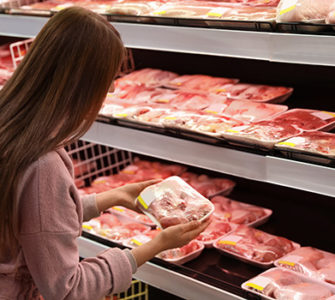FDA: Some antibiotics still OK for production purposes
New FDA guidelines that discourage using medically important antibiotics for promoting growth in food animals appear to have been well-received by both producers and most consumer activists.
Change always brings misunderstandings and confusion, however — and the new guidelines are no exception.
One growing misconception is that FDA-approved performance claims such as “increased rate of weight gain” and “improved feed efficiency” will be stricken from the labels of all antimicrobials used in food animals.
But that is not the case, according to Megan Bensette, health communication specialist for FDA. She confirmed to Poultry Health Today that performance claims would be removed only from antibiotics that FDA considered medically important to humans — tetracyclines, for example.
She emphasized that FDA’s actions were focused solely “on medically important antimicrobial drugs — that is, drugs that are also important for treating disease in people.”
Antimicrobials not on the FDA’s list of medically important antibiotics — bacitracin and bambermycins, for instance — would retain their performance claims under the agency’s new guidelines, Bensette confirmed.
Easily misinterpreted
This exemption is good news for efficiency-minded poultry producers looking to meet escalating world demand for healthy, safe and affordable chicken and turkey.
Still, the words “growth promotion” and the role these antimicrobials play in poultry production are often misunderstood, conceded Jon Schaeffer, DVM, director of poultry technical services for Zoetis Inc.
“Do these antibiotics actually make birds grow faster and more efficiently?” Schaeffer asked. “Or is improved performance secondary to improved health that enables birds to reach their full genetic potential?”
For a long time, he explained, it was thought that subtherapeutic doses of in-feed antibiotics enhanced growth by modifying intestinal microflora, although exactly how isn’t known for sure and is still up for discussion.
Explanations have included a reduction in subclinical infection, decreased production of microbial products that have toxic effects, depressed microbial competition within the bird for nutrients and enhanced absorption, according to the Poultry Science Association (1).
As far back as 1992, investigators from the University of California-Davis conducted studies indicating that feeding antibiotics may permit growth by preventing immunologic stress and associated metabolic changes (2).
More theories
Another theory emerged in 2007 with publication of a paper entitled “The Nonantibiotic Anti-Inflammatory Effect of Antimicrobial Growth Promoters, the Real Mode of Action? A Hypothesis.” The author argued that most antibiotics have a non-antibiotic, anti-inflammatory effect, which may in turn reduce wasted energy and spare it for production.
“Concomitant or subsequent changes in microflora are most likely the consequence of an altered condition of the intestinal wall,” Professor Theo A. Niewold, PhD, of the Catholic University, Leuven, Belgium, wrote in Poultry Science (3).
This theory would also explain why results with so-called growth-promoting antibiotics are highly reproducible, as opposed to those obtained by antibiotic alternatives that are aimed at microflora management, Niewold wrote.
Smaller footprint
Charles Hofacre, DVM, MAM, PhD, University of Georgia, sees other benefits to the continued but judicious use of the so-called performance antibiotics.
“By improving feed efficiency, consumers get the same amount of meat without requiring as much corn and soybeans for growth. That means more grain for other uses,” Hofacre said.
Producing more chicken on less feed also results in less manure output, which is better for the environment, he added.
1 Poultry Science Association. Newly proposed mechanism for the action of antimicrobial growth promoters (AGPs) may open the door to the development of new non-antibiotic alternatives to AGPs. Press release, 2007. http://www.poultryscience.org/pr032607.asp
2 Roura E, et al. Prevention of immunologic stress contributes to the growth-permitting ability of dietary antibiotics in chicks. J. Nutr. 1992;122:2383-2390.
3 Niewold TA. The nonantibiotics anti-inflammatory effect of antimicrobial growth promoters, the real mode of action? A hypothesis. Poult. Sci. April 2007 vol. 86 no. 4.
Posted on October 5, 2016
















